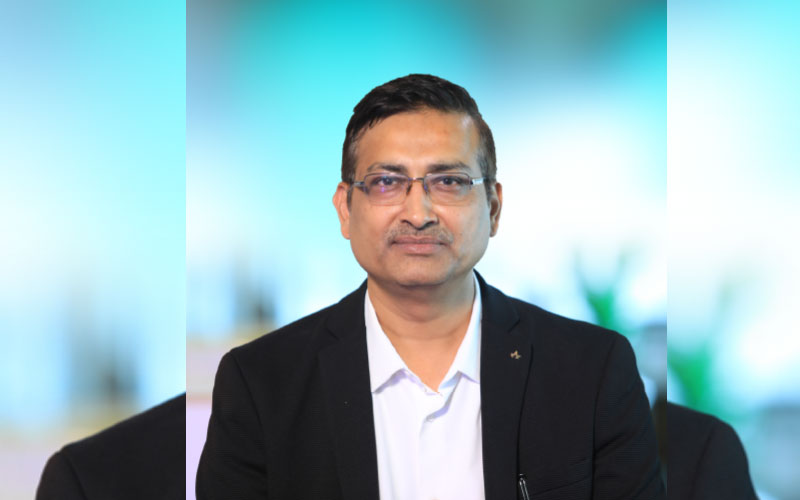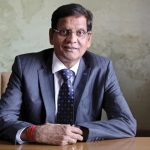Polycab is leveraging advanced insulation materials like XLPO and LSZH to enhance UV resistance, flame retardancy, and extend the operational lifespan of its solar cables. In an exclusive interview with Wire & Cable India, Mr. Anurag Agarwal, CEO, Global Exports & New Businesses, Polycab India, highlights that the rising global demand for India-made solar cables, driven by the ‘China+1’ strategy and the global shift toward renewable energy, has positioned Polycab as a preferred partner for EPCs across North America, Europe, the Middle East, and Asia-Pacific. The company is recognized for delivering high-performance, regulation-compliant, and tailor-made cable solutions that meet global quality benchmarks across solar and other cable segments.

Wire & Cable India: As India increasingly adopts 1.5 kV DC system architecture in large-scale solar installations to reduce BOS costs and improve system efficiency, how has your company adapted its solar cable design, especially in terms of insulation, thermal performance, and long-term reliability?
Anurag Agarwal: Polycab has strategically upgraded its solar cable design to meet the evolving demands of 1.5 kV DC architecture, which is increasingly adopted in large-scale solar projects to reduce BOS (Balance of System) costs and enhance efficiency.
The cables feature electron beam cross-linked halogen-free compounds for both insulation and sheathing, offering superior thermal and mechanical performance. With enhanced dielectric strength, they minimize leakage and ensure long-term insulation integrity across a 25-30 year lifespan. These cables are engineered to withstand a wide operating temperature range from -40°C to +120°C, and up to +250°C during short circuits.
Built for Indian climatic extremes, the cables also offer high UV, ozone, and moisture resistance, along with nylon jackets and abrasion-proof sheaths for underground installations. Fully compliant with EN 50618, UL 4703, TÜV 2 Pfg 1169/08.07, IS 17293, IEC 62930, RoHS, and REACH, these cables are built for global deployment with proven reliability.
Watch: Top Cable Companies in India
WCI: What role does electron beam (e-beam) cross-linking technology play in your solar cable manufacturing, and how does it compare to conventional cross-linking methods in terms of performance and cost-efficiency?
AA: E-beam cross-linking plays a pivotal role in enhancing the durability, safety, and performance of Polycab’s solar cables. Unlike conventional chemical cross-linking, this technology creates a stable 3D polymer network at the atomic level, resulting in superior thermal endurance, mechanical strength, and longevity. Cables produced using this method operate safely at 120°C and withstand up to 250°C during short circuits significantly higher than traditional methods. They exhibit lower dielectric loss, higher insulation resistance, and improved UV and hydrolysis resistance, especially in humid or submerged environments.
While the upfront cost of e-beam cables may be higher, their extended lifecycle, minimal degradation, and reduced maintenance needs offer significant long-term savings and system-level efficiency for EPCs and developers.
WCI: With floating solar and hybrid solar-plus-storage systems on the rise, how are your cables engineered to handle environmental extremes like water submersion, high UV exposure, or EMI interference?
AA: To cater to the rising deployment of floating and hybrid solar-plus-storage systems, Polycab has developed cables designed to perform under extreme environmental conditions. These cables are AD8-rated for water submersion and incorporate water-tight sheathing with hydrolysis-resistant cross-linked insulation. UV-stabilized outer sheaths, compliant with UL 1581 and ASTM 154, protect against prolonged sun exposure, while a wide operational temperature range of -40°C to +120°C ensures durability in all climates. Additional features such as anti-rodent and anti-termite protection, torsion resistance, and halogen-free, low-smoke characteristics further enhance their suitability for complex and varied installation environments.

To cater to the rising deployment of floating and hybrid solar-plus-storage systems, Polycab has developed AD8-rated cables for water submersion, incorporating water-tight sheathing with hydrolysis-resistant cross-linked insulation.
WCI: Can you walk us through your quality assurance processes, especially with respect to BIS compliance, fire safety, and lifecycle testing under IS or IEC standards?
AA: We maintain stringent quality assurance practices to ensure safety, compliance, and longevity across the company’s cable portfolio. All products under the Compulsory Registration Scheme (CRS) are manufactured in BIS-certified facilities in accordance with IS 694, IS 7098 (Parts 1–3), IS 9968, and IS 1554. Fire safety is a key priority, with cables tested for flame retardance, low smoke density, and fire survival as per IS and BS standards.
Furthermore, lifecycle testing includes accelerated aging, voltage withstand, UV resistance, water immersion, and mechanical durability checks. Our production lines are integrated with SCADA-based process control, statistical quality systems, and complete traceability.
Polycab’s certifications include BIS, CE, TÜV Rheinland, UL, ISO 9001:2015, ISO 14001, ISO 45001, and NABL accreditation for our in-house test labs, ensuring adherence to both domestic and global benchmarks.

At Polycab, we proactively manage exposure to metal pricing through LME-linked contracts and fair value hedge accounting.
WCI: What raw material trends are you observing, particularly in conductor metals and insulation compounds? How are you balancing performance with price volatility?
AA: In the past few years, raw material markets have been highly volatile, with fluctuations in copper, aluminium, and PVC prices driven by global macroeconomic shifts and supply chain disruptions.
At Polycab, we proactively manage exposure to metal pricing through LME-linked contracts and fair value hedge accounting. On the insulation front, we are increasingly adopting high-performance compounds such as XLPO, EPR, and LSZH—infact, many such proprietary compounds are developed in-house by our polymer R&D team.
These compounds improve thermal stability, flame retardance, and longevity without significantly impacting cost dynamics. This balanced approach enables us to deliver high-quality, compliant products while maximising profitability and maintaining steady market growth.
WCI: Are you seeing increased traction from global EPCs or exports for Indian-made solar cables? If yes, what benchmarks or certifications are most demanded internationally?
AA: There has been an increase in global demand for India-made solar cables, driven by the ‘China+1’ strategy and the global renewable energy push. The world is set to add more than 500 gigawatts (GW) of renewable energy capacity by 2030. Adding to this momentum, Polycab has emerged as a preferred partner for EPCs across North America, Europe, the Middle East, and Asia-Pacific, known for delivering high-performance, tailor-made and regulation-compliant products.
Our solar cables meet key global certifications such as EN 50618, IEC 62930, UL 4703, TÜV 2 Pfg 1169/08.2007, and are also RoHS and REACH compliant. Additional accreditations from BASEC (British Approvals Service for Cables) and UL (Underwriters Laboratories) reinforce our credibility in high-specification applications. Beyond certifications, our ability to customize products for different regional regulatory frameworks has strengthened our global footprint and appeal.

We are increasingly adopting high-performance compounds such as XLPO, EPR, LSZH, and many such proprietary compounds that are developed in-house by our polymer R&D team.
WCI: What are the key challenges solar cable manufacturers in India face today: whether it’s certification costs, skilled workforce shortages, or price-driven procurement? How are you tackling them?
AA: India’s solar cable manufacturing sector is growing quickly, but it faces challenges related to price-driven procurement, certification complexity, and talent shortages.
The aggressive focus on lowest-cost bidding, especially in tenders, can lead to compromised quality, with non-compliant cables sometimes mislabelled with BIS/TÜV/UL logos.
Expensive third-party audits, recurring costs and long lead times for global certifications such as UL, EN 50618, and TÜV also pose barriers.
Additionally, there is a skills gap in areas like polymer compounding, quality testing, and precision manufacturing, particularly for advanced processes like e-beam cross-linking.
Polycab addresses these challenges through continuous investment in automation, R&D, compliance, and workforce training.
Also Read: Wired for the Sun: How APAR Cables Power India’s Green Revolution
WCI: Finally, how is India’s solar cable manufacturing, especially in terms of material technology, certifications, and testing infrastructure, as compared with global benchmarks like those followed in Europe, the U.S., or East Asia? What areas still need improvement for India to become a global supply hub?
AA: India’s solar cable manufacturing capabilities have improved significantly, now competing with international standards in many aspects. Polycab and other leading players are leveraging advanced insulation materials like XLPO and LSZH, delivering enhanced UV resistance, flame retardancy, and extended operational lifespan.
Our NABL ISO 17025-accredited labs conduct extensive testing aligned with IS, IEC, UL, and BS standards, ensuring global quality benchmarks are met.
However, the broader industry still requires expansion of test facilities, faster and harmonized certification processes, and alignment of domestic standards with international norms to ease cross-border commerce.
Going forward, continued investment in material innovation, especially in sustainable and recyclable compounds, will be critical to position India not just as a high-volume producer, but as a global leader in value-added solar cable solutions.

Our NABL ISO 17025-accredited labs conduct extensive testing aligned with IS, IEC, UL, and BS standards, ensuring global quality benchmarks are met in the cable solutions.





